
Purpose This study was to explore construct of fear and courage behavior overcoming the fear and relationship between fear and courage in competition. Methods Total 65 national athletes of combat sports(Judo, Boxing, Taekwondo, Fencing) responded to open questionnaire about fear and courage behavior in competition. The data was analyzed by triangle verification and content analysis. Results Firstly, the fear of combat sports athletes consisted of five factors, which were negative consequences, lack of preparation for a game, concerns of performing one’s best, expectation of significant others, and internalized ego threat. Secondly, courage behaviors to overcome fear were self-effort, self-suggestion, self-conviction, selfish self-regulation, social self-control, self-analysis, and acceptance of experience. Finally, there were the relationship between fear and courage in competition. Conclusion These results will contribute to provide useful information for combat sport athletes and coaches in different level to cope with competition fear.

PURPOSE This study aimed to explore ways to utilize augmented reality (AR) in school sports and leisure by examining the case of an elementary school sports club using augmented reality-based e-sports. METHODS A self-study approach and Eisner's(1995) educational criticism were utilized. Data including photos, videos, literature, and memory boxes related to the elementary school AR sports club were collected weekly during the school semesters from March 2023 to January 2024, spanning a total of 30 weeks. The data were analyzed following the stages of analysis by Elo & Kyngäs(2007). RESULTS Augmented reality can act as a personalized exercise coach by visualizing physical activity information. Through posture and movement analysis, education on physical strength and expression can be provided that is linked to home; it can also expand the range of sports experiences and create a new sports culture. In order to effectively utilize AR, edtech field experts must be trained, and content must be developed through cooperation between companies and schools. The educational effectiveness of the content must be verified and the management system must be inspected, and public facilities utilizing edtech must be expanded. CONCLUSIONS AR has endless development potential in school sports and leisure, but these will require active interest and support from educational authorities.
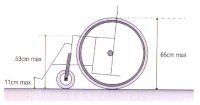
[Purpose] A potential issue for wheelchair sports are the characteristics of wheelchair design. The purpose of this review was to investigate the characteristics of design in wheelchair sports including the height of seat, camber and handrim size for improving the performance. [Results] The optimum height of seat related to trunk, arm length and handrim size. The lower seat showed the push efficient highly, while higher seat increased the energy expenditure. In energy expenditure, the optimum height of seat was 100-120° of elbow angle. Handrim size play the role in gear. The smaller handrim size acts like high gear, it gains disadvantages in acceleration, it gains advantages in maximum velocity. On the contrary, the higher handrim size acts like low gear, it gains disadvantages in maximum speed, it gains advantages in acceleration. The ratio of gear consideration in power and velocity. When increased camber enhanced the lateral stability, easier catch the handrim and easier arm motion. So it improved the energy expenditure and push technique. When increased camber enhanced the mechanical efficiency and stability, but it decreased the power. The racing wheelchair camber using the 8° and 10°. [Conclusion] Athletes, coaches and wheelchair experts are provided with insight in the performance effect of key wheelchair design settings, and they are offered a proven sensitive method to apply in sports practice, in their search for the best wheelchair-athlete combination.

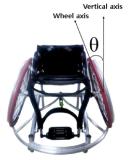
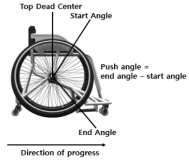
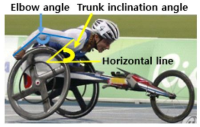

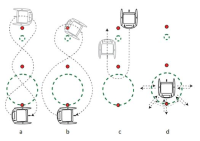
Purpose Based on Haidt's social-intuitionist theory, this study analyzes the differences in ethical decision-making between sport athletes and the general public in order to understand the ethical judgment tendencies of athletes and examine the determining factors influencing their judgment from the perspective of their environment. In so doing, this study hopes to motivate education for enhancing ethical consciousness as well as institutional policy. Methods To this end, 200 elite athletes in their twenties registered for more than 10 years at the Korean Sports Association and 200 college students in their twenties from five universities in Seoul were selected for comparison. Response trends for each item were analyzed by percentage, and differences between groups were confirmed by the χ2 test method. Results The results are as follows. First, in general ethical situations, athletes usually showed a compulsory ethical view that emphasized principles, whereas in a sports situation, they showed a double consciousness and revealed a very strong consequential ethical view which put much emphasis on outcome. Second, athletes strongly maintained a Confucian ethical view that recognized ethics as a norm compared to the general public and, as a result, it was found that paternalism was relatively stronger than rationalism in their ethical decision making. Third, athletes regarded other people's thoughts and group interests as important criteria for ethical decision-making rather than individual thoughts and interests, and showed a group-centered mindset which emphasized group harmony and relationship. Fourth, while the general public viewed excellent athletes as those with excellent skills and good personality, and valued their morality, athletes thought relatively little of the influence and importance of morality in their success. Finally, it was found that coaches and managers were fundamental to the formation of the athlete’s moral view. Conclusion An in-depth understanding of sports participants' ethical awareness should come first in order to enhance ethical consciousness in sport. I hope this study will work as a catalyst for research which approaches athletes' ethical consciousness from a socio-cultural context.

Purpose The purpose of this study was to apply the Self-Assertiveness Training based on Solution-Focused to student-athletes caused by violence in sports. Methods Participants were five Taekwondo athletes in this study. They were consisted of offenders, a accuser, and a victim. The head coach of the team asked for counseling to resolve the conflict. Data was collected with quantitative, qualitative data, and group dynamics. The group counseling program was conducted for 90 minutes a week for eight weeks. Results The results are as follows. First, (application process) the 8-week Self-Assertiveness Training based on Solution-Focused was assessed to be applied step by step and systematically. Second, (qualitative evaluation) as a result of analyzing the observation journal and the interview data, the participants experienced the change of attitude and thought of group members in a short period of time by focusing on enhancing self-assertiveness. Third, (quantitative evaluation) self-assertiveness and attitude of school violence measured by questionnaires were higher in post-survey than pre-survey. In addition, participants' satisfaction with the program was found to be very positive. Discussions and Suggestions Self-Assertiveness Training based on Solution-Focused was found to have a significant effect on conflict resolution among the student-athletes who have experienced violence in sport. This programs was expected to increase the value of use in the sport field. Based on this case study, We suggested for future research.


PURPOSE This study aimed to provide evidence for improving the working environment by exploring the phenomenon of presenteeism experienced by coaches. METHODS Ten coaches experiencing presenteeism were selected as participants of the study using the snowball sampling method, and in-depth interviews were conducted. The in-depth interviews were conducted for about 50 to 60 min using semi-structured questions organized through pre-expert meetings, and inductive content analysis was conducted. RESULTS First, the health problems that developed while coaching were categorized into two detailed areas (physical and psychological symptoms). Second, the causes of presenteeism were categorized into four general areas (policy and institutional problems, poor job environment, athlete problems, and human relations). Third, performance loss due to presenteeism was categorized into two general areas (coach-athlete relationship damage and poor training performance). Finally, coping with presenteeism was categorized into three detailed areas (private time spending, joining acquaintances, and changing training methods). CONCLUSIONS The result of this study confirmed that coaches are currently experiencing the phenomenon of presenteeism for various reasons, and the symptoms and coping method for this differ with each individual. However, the phenomenon of presenteeism experienced by coaches requires further future research since it is not easily observed and the coping method is not efficient.
PURPOSE The purpose of this review was to summarize the current knowledge on the trends in athletes’ health problems (and their preventive strategies) caused by low energy availability (LEA) and relative energy deficiency in sports (RED-S). METHODS In this narrative review, we summarized previous studies by searching the literature in the PubMed, Google Scholar, and Science Direct databases. RESULTS Energy availability (EA) refers to the amount of energy from caloric intake used for exercise, and a LEA is considered as a surrogate marker of RED-S. In several previous studies, chronic low energy availability in female athletes has been reported to cause health problems such as endocrine dysfunctions, immunosuppression, and psychological disorders, and to also affect the hypothalamic-pituitary-gonadal (HPC) axis and bone health. Moreover, it has been suggested that an increase in injury risk and a decrease in exercise performance may occur. CONCLUSIONS Since it can be difficult to recover from the health deteriorations caused by RED-S, early detection (of related signs and symptoms) and prevention are very important. Therefore, athletes, coaches, and parents need to develop educational programs that ease the recognition of the problems caused by various symptoms related to RED-S and promote educational interventions.
PURPOSE This study examined the cultural experiences of tennis club members that have changed due to COVID-19, specifically emphasizing the accepted culture within these clubs. METHODS Seven tennis club members, with over five years of experience, active participation in two or more clubs, and a history of active participation, were interviewed using in-depth interviews and a semi-structured questionnaire. RESULTS Firstly, the tennis club members accepted the “no contact” culture that has emerged since COVID-19. Secondly, social distancing made getting together in large groups difficult, and tennis club activities became more limited. This has led to weakening the tennis club community, which is different from what we have seen before. Lastly, the growing interest in non-traditional content has led to an increase in participants enjoying tennis through social media. The information and experiences gained through social media have changed the perception of coaching. CONCLUSIONS The cultures that tennis players have adopted due to COVID-19 are expected to continue in the future. The findings from this study may provide evidence for understanding the changing culture of sports in the future.
Purpose The purpose of this studied to improve athletes’ performance through sports psychological skills training and counseling of a male canoe player in high school. Methods One male high school athlete in J area was interviewed for sports psychological skills training and counseling, and interviewed athletes and coaches diagnosed the potential psychological problems of athletes. Through this process, the athlete gained the ability to control anxiety about the game and strengthened the attention-focused ability to increase his confidence and set a goal for improving concentration. For effective training, sports psychological counselors, athletes, and coaches met once a week to create a routine. and participated in direct training on a boat with the coach every week. Sports psychological skills, anxiety about competition, and self-management of athletes were measured before and after to confirm the effectiveness of training of athletes' psychological skills. Results As a result, athletes' psychological skills and anxiety decreased, their confidence increased, and their concentration, which was diagnosed as an urgent problem of athletes, improved. Conclusions psychological skills of athletes, psychological shortcomings of players were reinforced, thus enhancing the athletes' performance. This suggests the effectiveness and necessity of training in sports psychological skills. It is hoped that continued support will serve as an opportunity to diagnose potential psychological problems of student athletes and apply them to training to contribute to improving their performance.
PURPOSE This study examined the effect of sports life skills and life skills transfer of student-athletes and coaches, applying Actor-Partner Interdependence Model (APIM). METHODS Korean student-athletes and coaches from middle and high school sports teams participated in this study. There were 300 student-athletes (Mage=15.44, SD=1.64; male=218, female=82), with an average of 5.46 (SD=2.40) years of athletic career. Meanwhile, 33 coaches were (Mage=39.70, SD=8.36; male=26, female=7), with an average of 13.52 years of coaching career (SD=10.01). Measures included the Life Skills Scale for Student-Athletes (LSSSA; Jang et al., 2020) and Korean Life Skills Transfer Survey (KLSTS; Lim et al., 2018). Descriptive analysis, correlation, and APIM were undertaken by using the SPSS and AMOS programs. RESULTS First, the correlation between athletes’ and coaches’ life skills was not significant. Second, athletes’ life skills significantly affected their life skills transfer, similar to coaches’ life skills significantly affecting their life skills transfer. Fourth, coaches’ life skills did not significantly influence athletes’ life skills transfer, and the converse was not true either. CONCLUSIONS This study verified the effect of life skills development for two groups of athletes and coaches, on transfer in sports, and attempted statistical verification of whether it affects sports life skills and transfer between athletes and coaches. Although no statistically significant results were found in the partner effect, it is meaningful in that, it provided important implications for conducting a follow-up study on the relationship between athletes and coaches. In other words, it is expected to be a cornerstone for research on building a new model, along with investigating the interactive relations between athletes and coaches on life skills in the sports field.